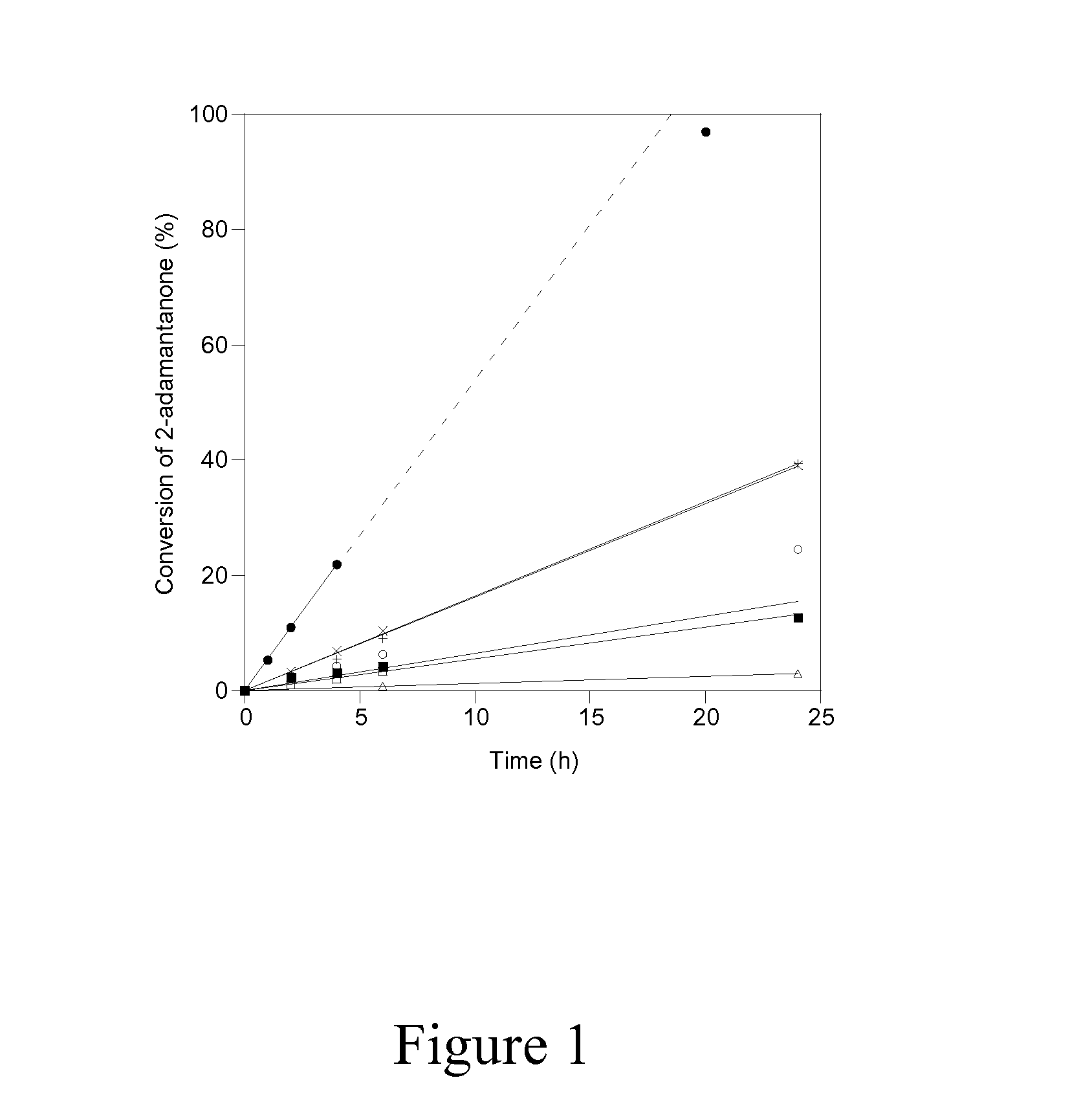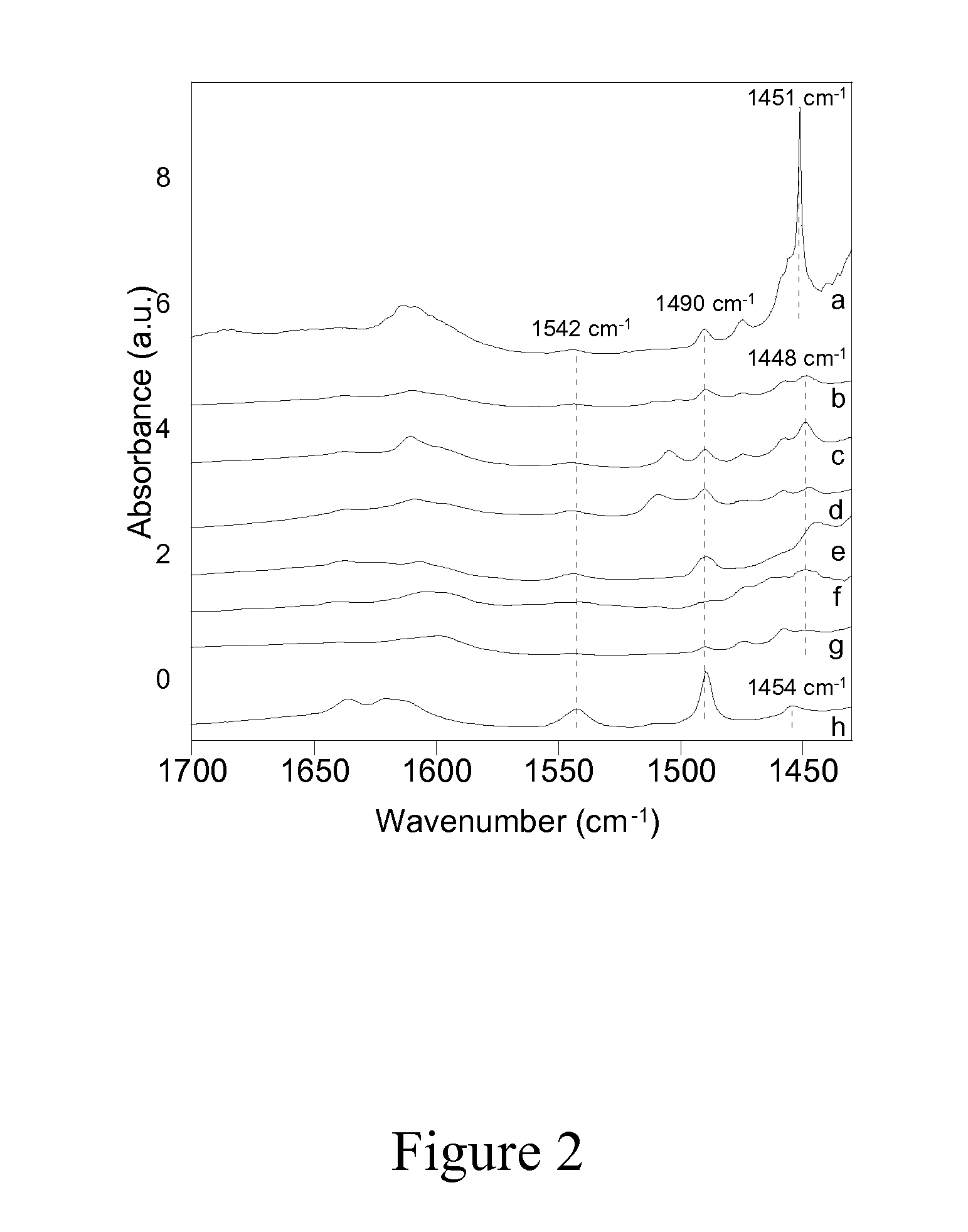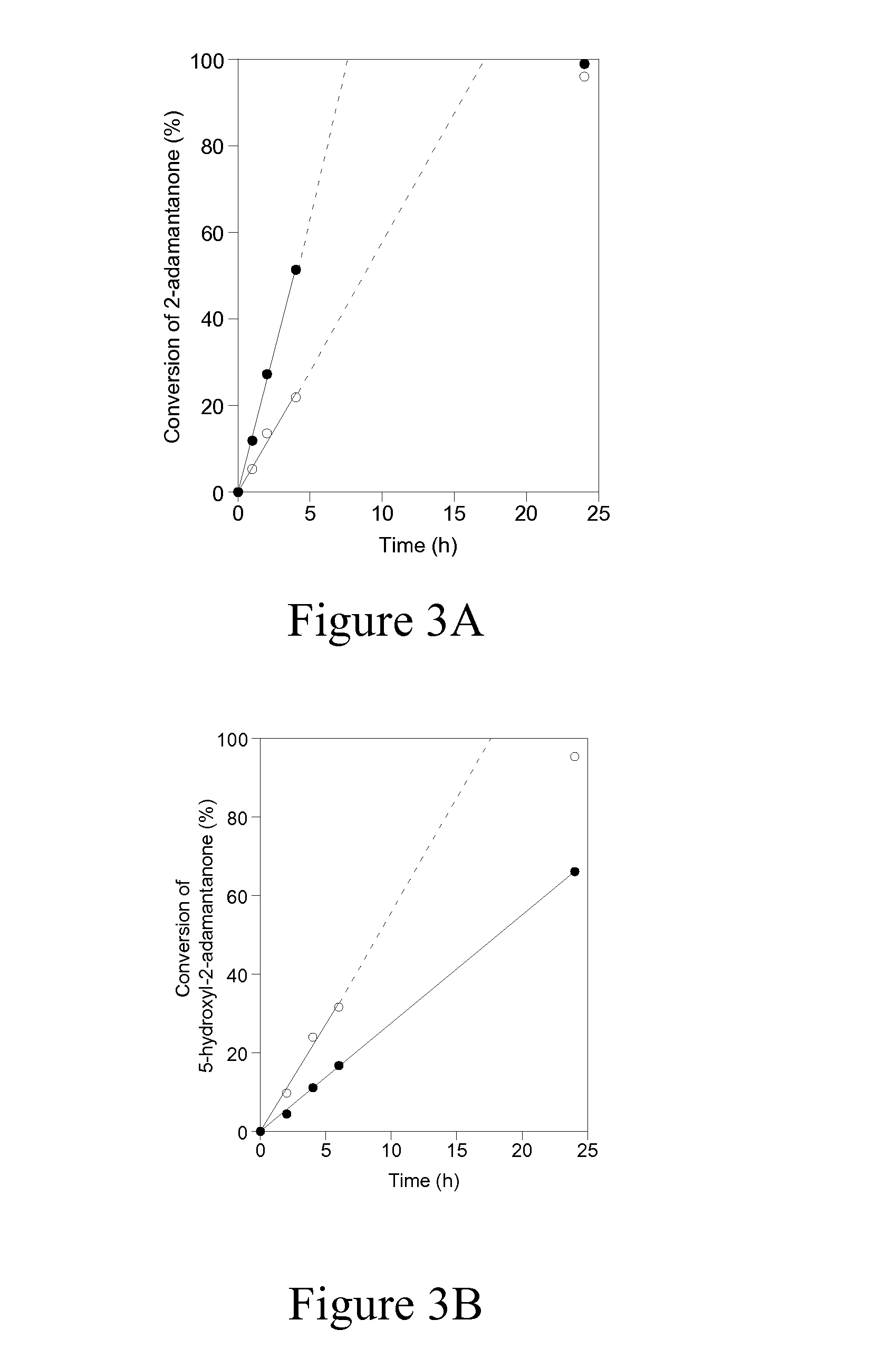Highly active, selective, accessible, and robust zeolitic sn-baeyer-villiger oxidation catalyst
- Summary
- Abstract
- Description
- Claims
- Application Information
AI Technical Summary
Benefits of technology
Problems solved by technology
Method used
Image
Examples
example 1
[0038]Baeyer-Villiger (BV) oxidation procedure. The BV reactions were performed on the DZ-1-based materials using the following reaction conditions: catalyst, 0.66 mol % of metal with respect to ketone; ketone, 1 mmol; H2O2, 1.5 mmol; dioxane, 3 mL; temperature, 75° C. Dodecane was used as an internal standard. The reactions were performed in a 15 ml sealed, thick-walled glass reactor with vigorous stirring. Aliquots from the reaction mixture were sampled and analyzed by gas chromatography (FID detector) using an Agilent 6890 and a 30-m HP-1 column. The lactone products were identified by comparing their retention times. The conversion was calculated based on the total initial amount of ketone.
[0039]The accessibility and catalytic activity of heteroatoms substituted in delaminated Lewis-acid zeolites were confirmed using the Baeyer-Villiger oxidation of 2-adamantanone with aqueous hydrogen peroxide at 75° C. as a probe reaction, the chemical equation of which is shown in Scheme 1a.
[...
example 2
[0041]In order to investigate the reactivity and accessibility of Sn sites that are located in two vastly differing zeolitic environments (i.e. microporous versus delaminated), the catalytic activity of Sn-DZ-1 (Si / Sn=65) and Sn-Beta (Si / Sn=100) for Baeyer Villiger oxidation was compared using ketones of varying steric bulkiness, as shown in Scheme 1. Sn-Beta has been previously reported to be an active and selective catalyst for Baeyer-Villiger oxidation, where the isolated Sn sites are located within the 3D 12-MR pores and BEA channel system. This is entirely in contrast to Sn-DZ-1, where the Sn sites are located within 12-MR pockets that are near the external surface. Therefore, the accessibility of Sn-Beta for bulky substrates may be expected to be more limited in Sn-BEA than in Sn-DZ-1.
[0042]Baeyer-Villiger kinetics data in FIG. 3A and Table 2 show that when 2-adamantanone is used as the ketone substrate, Sn-Beta shows significantly higher activity than Sn-DZ-1 (1963 mol h−1 (m...
example 3
[0043]To investigate the relationship between the catalytic activity for Baeyer-Villiger oxidation and the proximity of the Sn sites, two batches of Sn-DZ-1 with different Sn contents were prepared, which was accomplished by varying the synthesis time. These two Sn-DZ-1 samples have Si / Sn ratios of 65 and 94. If the reaction requires two Sn sites to work cooperatively, one should expect that the one with lower Si / Sn ratios should have disproportionally higher catalytic activity than the one with higher Si / Sn ratios. The catalytic results shown in FIG. 4 and summarized in Table 3 below suggest that the per-Sn-site activity for each sample is similar: 866 mol h−1 (mol Sn)−1 for Sn-DZ-1 with Si / Sn=65 and 767 mol h−1 (mol Sn)−1 for Sn-DZ-1 with Si / Sn=94. Therefore, these results suggest that activity for Baeyer-Villiger oxidation is independent of the local density of Sn sites and is likely accomplished with an isolated Sn site.
TABLE 3BV Oxidation of 2-adamantanone with H2O2 Catalyzed b...
PUM
 Login to View More
Login to View More Abstract
Description
Claims
Application Information
 Login to View More
Login to View More - R&D
- Intellectual Property
- Life Sciences
- Materials
- Tech Scout
- Unparalleled Data Quality
- Higher Quality Content
- 60% Fewer Hallucinations
Browse by: Latest US Patents, China's latest patents, Technical Efficacy Thesaurus, Application Domain, Technology Topic, Popular Technical Reports.
© 2025 PatSnap. All rights reserved.Legal|Privacy policy|Modern Slavery Act Transparency Statement|Sitemap|About US| Contact US: help@patsnap.com



